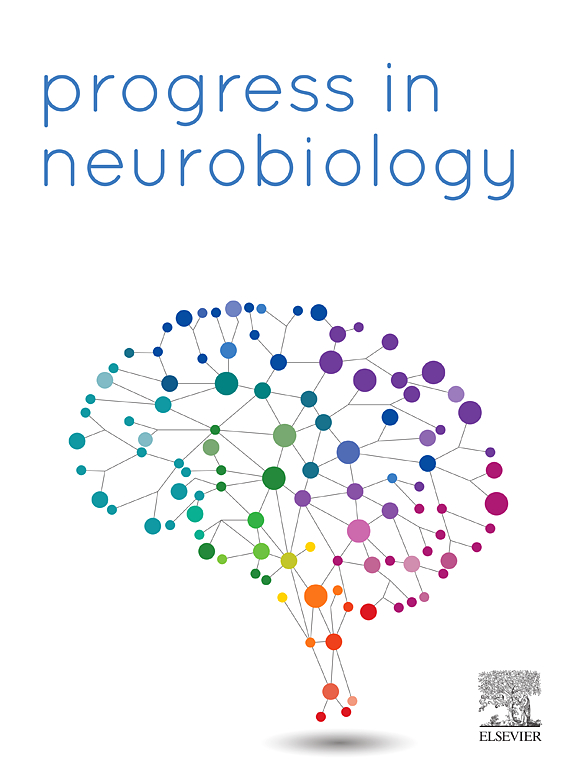Transcriptomic shifts in Microtus ochrogaster neurogenic niches reveal psychiatric-risk pathways engaged by pair-bond formation
IF 6.1
2区 医学
Q1 NEUROSCIENCES
引用次数: 0
Abstract
Pair bonding (PB) is a stable affiliative relationship that confers profound behavioral and physiological advantages. The prairie vole (Microtus ochrogaster), one of the few socially monogamous mammals, provides a tractable model for dissecting the neurobiological substrates of social interactions. We previously showed that social co-habitation with mating (SCM) increases cell proliferation and neuronal differentiation in the subventricular zone (SVZ) and dentate gyrus (DG), implicating adult neurogenesis in bond formation. Here, we characterized the underlying molecular programs by bulk RNA-seq of the SVZ, DG and nucleus accumbens (NAc) at two time points, 48 h and 120 h, following SCM or isolated (control) housing. Across ∼ 18000 expressed genes, 286 differentially expressed genes (DEGs) emerged in the female SVZ and 540 in the females DG (120 h vs 48 h SCM), whereas male niches displayed markedly fewer transcriptional shifts, confirming pronounced sexual dimorphism. Gene ontology analysis revealed sustained upregulation of mitochondrial and oxidative-phosphorylation modules, coupled with downregulation of neurogenesis, synaptic plasticity, and cell migration pathways in females at 120 h. In vitro, SVZ-derived neurospheres from females mirrored these signatures: SCM increased the sphere number at 48 h, but neuronal output normalized by 120 h, indicating a transient neurogenic surge. Numerous zinc-finger transcripts and unannotated long non-coding RNAs were also regulated, hinting at vole-specific epigenetic controls. Strikingly, > 100 DEGs mapped to human psychiatric-risk loci. Autism disorder spectrum (ADS) and schizophrenia-associated orthologues (e.g., GRIN2A/B, KMT2A, UBE3A) were predominantly downregulated during bond consolidation in females, whereas isolation elevated major depressive disorder (MDD) markers (e.g., CACNA1H) in both sexes. These data suggest that pair-bond formation recruits transcriptional networks that overlap the genetic architecture of neuropsychiatric diseases, and that social isolation elicits an opposing, disorder-linked profile. Together, our results identified sex-specific, temporally phased molecular pathways that couple adult neurogenesis, energy metabolism, and psychiatric-risk gene networks to the establishment of enduring social bonds.
田鼠神经源性生态位的转录组变化揭示了与配对键形成有关的精神疾病风险通路。
伴侣结合是一种稳定的从属关系,具有深刻的行为和生理优势。草原田鼠(Microtus ochrogaster)是为数不多的社会一夫一妻制哺乳动物之一,为解剖社会互动的神经生物学基础提供了一个易于处理的模型。我们之前的研究表明,社会同居与交配(SCM)会增加心室下区(SVZ)和齿状回(DG)的细胞增殖和神经元分化,暗示成年神经发生与结合形成有关。在这里,我们通过对SVZ、DG和伏隔核(NAc)在SCM或分离(对照)房后48和120小时两个时间点的大量rna测序来表征潜在的分子程序。在18000个表达基因中,雌性SVZ出现286个差异表达基因(deg),雌性DG出现540个差异表达基因(deg) (120h vs 48h SCM),而雄性生态位表现出明显较少的转录变化,证实了明显的两性二态性。基因本体论分析显示,线粒体和氧化磷酸化模块在120h时持续上调,同时神经发生、突触可塑性和细胞迁移途径下调。体外,雌性svz衍生的神经球反映了这些特征:SCM在48小时增加了球数,但神经元输出在120小时后正常化,表明短暂的神经源性激增。大量锌指转录本和未注释的长非编码rna也受到调控,暗示存在田鼠特异性表观遗传控制。引人注目的是,bb100度与人类精神疾病风险位点相对应。自闭症谱系(ADS)和精神分裂症相关同源物(如GRIN2A/B, KMT2A, UBE3A)在女性中在键巩固过程中主要下调,而分离在两性中升高了重度抑郁症(MDD)标记物(如CACNA1H)。这些数据表明,配对键的形成招募了与神经精神疾病的遗传结构重叠的转录网络,而社会隔离则引发了相反的、与疾病相关的特征。总之,我们的研究结果确定了性别特异性的、暂时分阶段的分子途径,这些途径将成人神经发生、能量代谢和精神疾病风险基因网络结合起来,以建立持久的社会纽带。
本文章由计算机程序翻译,如有差异,请以英文原文为准。
求助全文
约1分钟内获得全文
求助全文
来源期刊

Progress in Neurobiology
医学-神经科学
CiteScore
12.80
自引率
1.50%
发文量
107
审稿时长
33 days
期刊介绍:
Progress in Neurobiology is an international journal that publishes groundbreaking original research, comprehensive review articles and opinion pieces written by leading researchers. The journal welcomes contributions from the broad field of neuroscience that apply neurophysiological, biochemical, pharmacological, molecular biological, anatomical, computational and behavioral analyses to problems of molecular, cellular, developmental, systems, and clinical neuroscience.
 求助内容:
求助内容: 应助结果提醒方式:
应助结果提醒方式:


